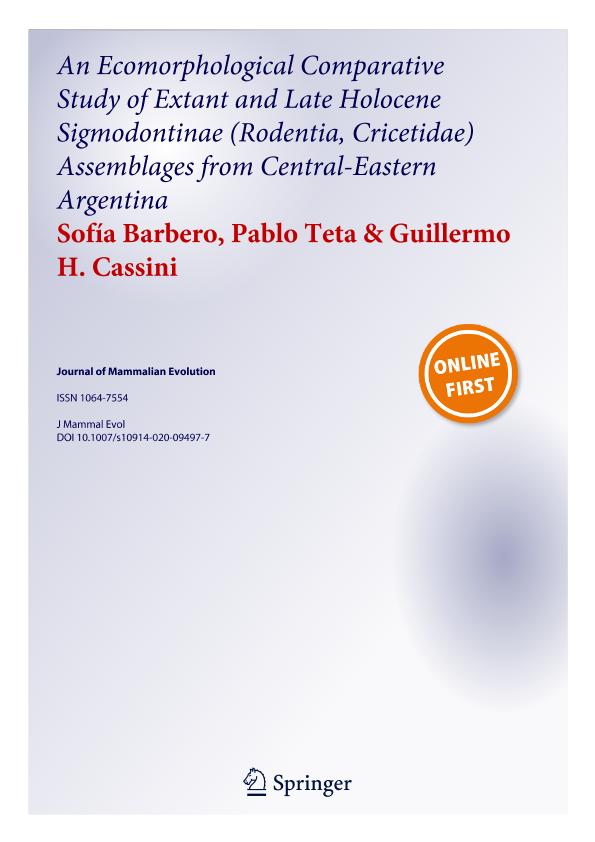Artículo
An ecomorphological comparative study of extant and Late Holocene Sigmodontinae (Rodentia, Cricetidae) assemblages from central-eastern Argentina
Fecha de publicación:
12/2020
Editorial:
Springer
Revista:
Journal of Mammalian Evolution
ISSN:
1064-7554
Idioma:
Inglés
Tipo de recurso:
Artículo publicado
Clasificación temática:
Resumen
The anthropic effect associated with worldwide European settlements over the last 500 years has caused dramatic environmental changes, modified regional patterns of biodiversity, and often led to local or complete extinctions. The sigmodontine rodents of Bahía Samborombón (Humid Pampas, central-eastern Argentina) constitute a good case study: a late Holocene archaeological site allowed us to compare a pre-European settlement assemblage (12 species) with the extant one (nine species). We used linear morphometrics (16 cranial and ten mandibular measurements) to assess interspecific morphological variations of the masticatory apparatus in relation to dietary habits for each assemblage. Even though sigmodontines have a tendency towards omnivory, groups based on dietary preference only overlapped partially. Size was one of the main variables involved in niche segregation, and shape characteristics such as rostrum elongation or mandible robustness were linked to different diets. We found that a combination of dietary preference and size was associated with extinctions. The main morphospace change between the two assemblages was related to the local extinction of the three greater insectivores and the smallest graminivore, located towards the center of the assemblage’s morphospace. An insectivore was incorporated, involving no significant changes in the general morphospace. Graminivores and larvivores were not affected. Our study sheds light on the causes of local extinctions of small mammals at the Humid Pampas, a phenomenon that had never been studied from an ecomorphological approach.
Palabras clave:
ANTHROPIC EFFECT
,
CRICETID
,
ECOMORPHOLOGY
,
LOCAL EXTINCTION
,
PAMPA
,
RODENTS
Archivos asociados
Licencia
Identificadores
Colecciones
Articulos(MACNBR)
Articulos de MUSEO ARG.DE CS.NAT "BERNARDINO RIVADAVIA"
Articulos de MUSEO ARG.DE CS.NAT "BERNARDINO RIVADAVIA"
Citación
Barbero, Sofía; Teta, Pablo Vicente; Cassini, Guillermo Hernán; An ecomorphological comparative study of extant and Late Holocene Sigmodontinae (Rodentia, Cricetidae) assemblages from central-eastern Argentina; Springer; Journal of Mammalian Evolution; 27; 4; 12-2020; 697-711
Compartir
Altmétricas




